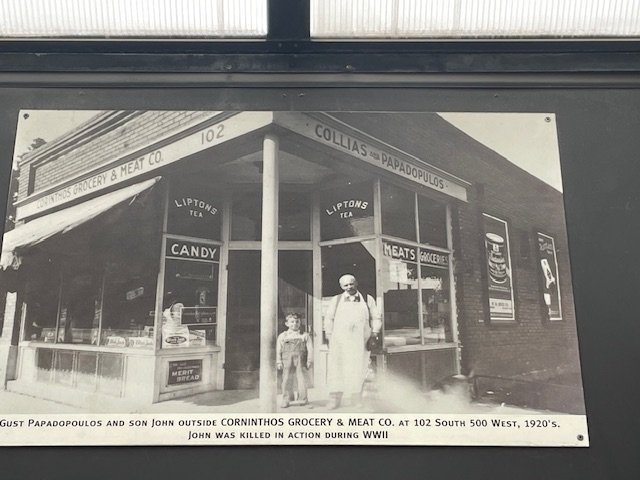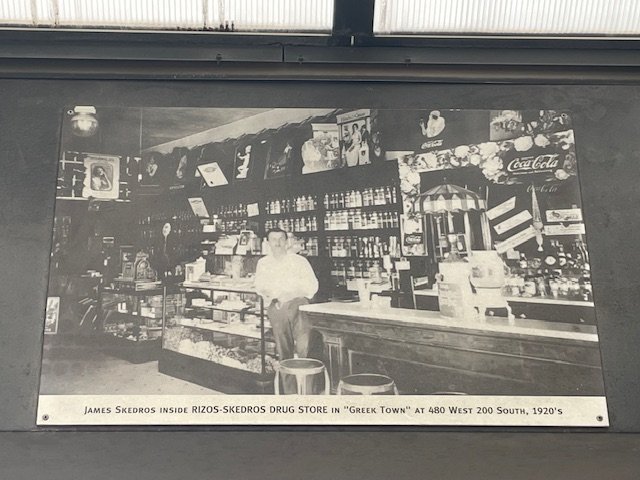Greek Town TRAX Station
At the turn of the 20th century, Utah was changing from an agricultural economy to one based upon hard and soft mining. In 1905, large numbers of unskilled workers were needed to work at the Utah Copper Open pit in Bingham Canyon. At the valley’s mill and smelter communities, and on railroad expansion throughout the Intermountain West. Immigrants from Greece, Italy, Croatia, Servia and other conuntries began arriving in Utah looking for work.
In 1900, Greek immigrants (all male) were already living in Salt Lake City. The section of SLC between the Union Pacific Depot on South Temple to the Rio Grande facilities on 300 South and on 200 South from 200 West to 600 West, became the central area of what was SLC’s largest ethnic enclave - “Greek Town.” By 1908, this part of the city was the home for several thousand Greek
immigrants, many with families. It became the center of their cultural, economic, religious and social life. Utah’s first Holy Trinity Greek Orthodox Church (1905) was located at 439 West 400 South, adjacent to “Greek Town”.
In 1916, “Greek Town” had 116 Greek owned businesses serving not only the large immigrant community, but also many others living in the area. At the same time, 78 Greek-owned businesses were located a few blocks east in the city’s central business district. In “Greek Town” there were many barber shops, bookstores, cafes, restuaurants, grocery stores, drug stores, shoe shine parlors, boarding houses and coffee houses. The coffee houses - kafenia- were the working man’s social center.
After World War I, the ever-growing community needed a much larger church. In 1924, the second Holy Trinity Greek Orthodox Church was built nearby at 279 South 300 West. Today the Holy Trinity Cathedral is a Historic Landmark in Downtown Salt Lake City and continues to serve as fundamental focus of the Greek Orthodox community. The Economic Depression (1929-36) saw a major decline in Greek businesses. Additionally, many of the immigrant familieis by then had moved east toward the main neighborhood centers of the city. By the end of World War II, only 15 business served in the area and very few families still lived in “Greek Town”. By 1950, 150 Greek and Greek-American enterprises were located in the city’s extended business district.
During the period from 1900-49, Salt Lake City’s “Greek Town” was one of the largest Greek communities between St. Louis and San Francisco. Today only memories remain of the area which was a very vibrant and most unique experience in the city’s history. For the immigrants of that period, it was the beginning of the fulfillment of the American Dream.










